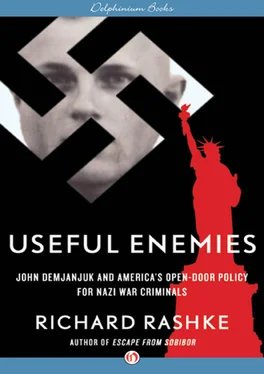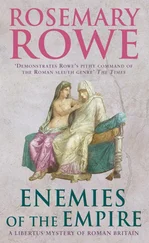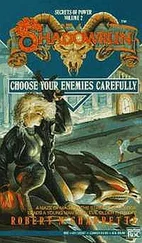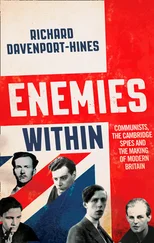“What happened at Plattling,” one historian wrote, “was repeated in almost every other camp. There was no reason and no mercy.”
An American artillery officer in the 102nd Infantry Division described his role in the massive repatriation operation. “For about two weeks day and night,” he wrote in a letter, “I led about seventeen trucks on shuttle service all over Germany and France on this mission [of rounding up Soviet POWs for repatriation]. There were thousands of other trucks doing the same.”
The fate of the POWs captured in German uniforms or liberated from work camps was dire. Most officers were executed, some on the spot by angry Red Army soldiers. Since Stalin badly needed workers to rebuild Russia, the rest were sentenced to between fifteen and twenty-five years of hard labor in factories, construction sites, and gulags. The stiffer sentences went to those who had resisted repatriation. Most died before Nikita Khrushchev’s amnesty ten years later.
• • •
If the fate of the Soviet POWs was tragic, what can be said about the 1.5 million Soviet civilians whom the Germans uprooted from their homes and forced to work for the Reich in the West? Now they languished in American and British POW camps throughout Europe, their future uncertain. Under the terms of the Yalta agreement, they too had to be forcibly repatriated if they resisted. Their only hope was luck and compassion.
Some got lucky. Few found compassion.
The Soviets mounted a massive propaganda campaign aimed at convincing its citizens to return home voluntarily. Leaflets, pamphlets, newspaper articles, films. Promises of warm welcomes. Old homes returned. Good jobs. Education opportunities. Above all, the comforting love of mother Russia. The campaign worked. Thousands streamed east to transfer points, mostly on foot, sometimes in trucks or carts or by ferry. The elderly and sick, women and children, mothers pushing baby carriages. They carried the tatters of their lives in boxes, suitcases, and canvas bags.
Mandolins, accordions, and folk singers waited for them at the transfer points. There were bright garlands, pictures of a beaming Joseph Stalin, and huge streamers bearing slogans like “Long live the Motherland” affixed to waiting railcars pointing east. It was all staged to keep the thousands calm and to provide footage for reporters from the West.
Most returning civilians entered the Soviet Union smiling. Some were truly happy to be going home, eager to rejoin what was left of their families. Others returned with frozen smiles, the only possible response to being abandoned and betrayed by both the Americans and the British to the terror of a vindictive regime.
All were duped.
There were no cushy jobs waiting. Only hard menial work without the possibility of promotion. There were no open classroom doors, no return to ancestral homes. Only stigma and isolation on the fringes of Soviet society, where they could not infect “good Russians” with poison from the West.
As historian Mark Elliott concluded in his aptly titled book, Pawns of Yalta : “The toll of human destruction from Russia’s boundless vindictiveness toward returners must encompass not only those killed outright and those who languished or perished in camps. It must also encompass the remainder of returner-pariahs, crippled physically and spiritually by malevolent, security-obsessed figures ensconced behind the Kremlin’s ornate facade.”
Not all Soviet civilians returned. Some hid. Many lied on visa applications, saying they were born in Poland. Some attacked the Soviet repatriation teams who had the right to visit the DP camps under the terms of the Yalta agreement. A DP mob killed at least one. Some fought U.S. military police with sticks, stones, and fists. Whole groups refused to get into trucks. Two examples illustrate their despair.
• • •
On July 12, 1945, U.S. military police broke into a makeshift DP church, a former gymnasium, in Kempten, Bavaria. Huddled around the altar seeking sanctuary were four hundred Soviet civilians, weeping and begging for mercy. The American soldiers rushed at them with clubs, knocking some senseless, dragging the rest outside praying and screaming. The soldiers left behind smashed icons, torn sacred vestments, and pools of blood.
A team of Soviet soldiers was waiting outside the church to take them home. The Soviets smiled in amusement at the brutal scene—Americans beating helpless people about to be deported east, like the SS and Gestapo rounding up Jews for the extermination camps. The Soviets loaded the group into trucks and drove them to a nearby train station, where they spent the night. Some managed to escape before morning. The rest left for the Soviet Union the next day.
• • •
On the morning of June 1, 1945, several thousand Cossack civilians—mostly old men, women, and children—stood in frightened silence outside their transit-camp barracks near Lienz, Austria, a sleepy picture-postcard village in a mountain valley. Even the babies didn’t cry. They had good reason to be scared. Surrounded by British tanks, they were about to be pushed across a wooden bridge spanning the Draga River into Soviet-occupied Yugoslavia. From there, Red Army soldiers would escort them home to the Soviet Union.
A little to the east, closer to the Draga, the British were rounding up several thousand Cossack fighters whose families were waiting back at the Lienz camp. The Cossack soldiers were part of the 25th SS Cavalry Corps, a bitterly anticommunist force—forty to fifty thousand strong—made up of former POWs, Red Army defectors, and civilian volunteers from Cossack communities across Eastern Europe.
The Cossacks had begun collaborating with Germany as soon as it invaded the Soviet Union in 1941, naïvely hoping, like the Ukrainians, to topple Stalin and establish an independent state. Given the Cossacks’ historical reputation as fierce fighters, the Germans used them mainly to hunt partisans in the mountains of Eastern Europe.
The 25th Cavalry had surrendered to the British several weeks before that June morning believing that they could help the Allies fight communism in the new Cold War. The British detained them and their families, who had fled the Soviet Union with them, as well as other civilian refugees in transit camps in Austria and Italy. The Lienz compound was one of the largest. Like the Americans, the British promised the Cossacks that they would not be forcibly repatriated to the Soviet Union.
Like the Americans, the British lied.
All during the night of May 31 and well into the early morning hours of June 1, priests in the Lienz transit camp had heard the confessions of those who wanted to make peace with their God before the British or the Soviets murdered them. Hundreds begged God’s forgiveness for the terrible sin they were about to commit. Standing in that frightened, silent crowd was Eugenia Borisovna Polskaya, a former Cossack refugee camp nurse and a journalist who would later describe what she witnessed on that spring morning in a picturesque Alpine valley.
As they stood waiting, the crowd heard gunshots up ahead, near the Draga. Older children climbed on the shoulders of adults to look east, toward the wooden bridge and Yugoslavia on the other side. They called out what they saw: British soldiers throwing unarmed 25th Cavalry Cossack soldiers into trucks, beating them with iron clubs, shooting those who fought back with their fists, men trying to run across fields to safety, more gunshots, dead bodies strewn in the fields, mounted Cossack cavalrymen streaming across the bridge.
Soon the British tanks began to push the Cossack civilians gathered in the camp square toward the river. Priests led them in song, as if the combined sound of their voices raised in a last hopeful prayer would soften the hearts of the British soldiers, who seemed to be everywhere. As they pushed forward, the tanks crushed makeshift pulpit-altars erected in the square, grinding icons into the dirt. Soldiers beat the heads of resisters and laggards with riot clubs.
Читать дальше












